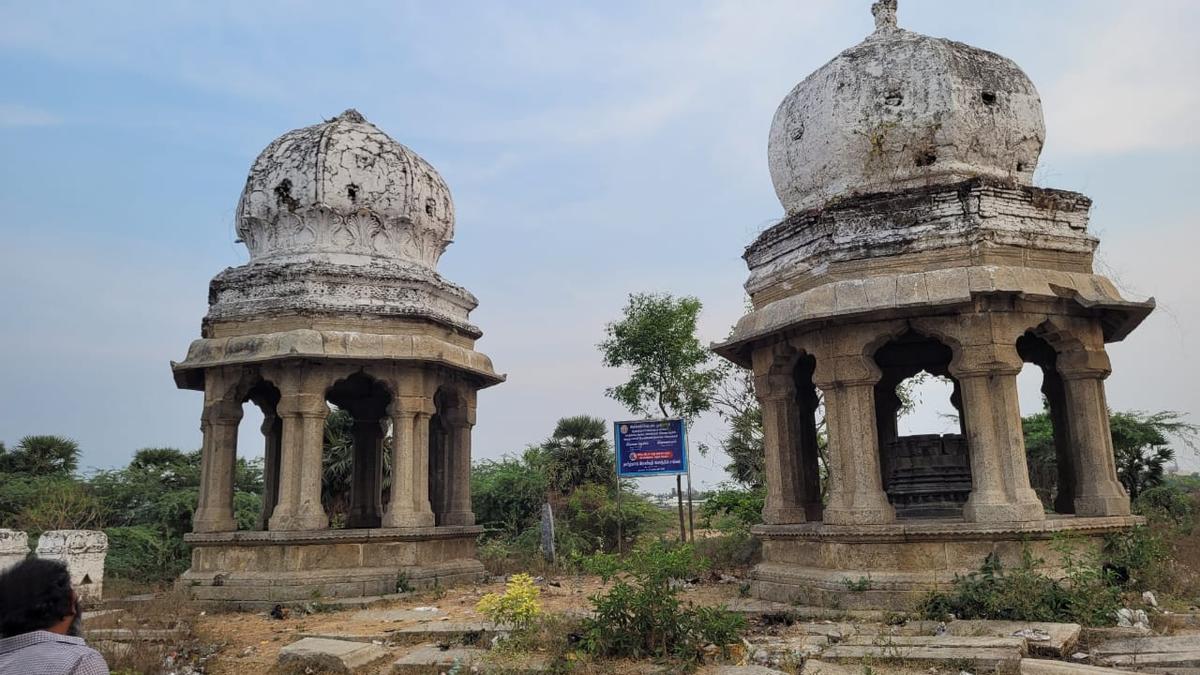
Memorial that gave Ranipet town its name to be restored soon
The Hindu
Restoration of 18th-century royal memorial in Ranipet, built by Nawab of Arcot, to be completed in three months.
The industrial town of Ranipet that derives its name from the young wife of Rajput ruler of Gingee of 18th century was delighted as the medieval memorial, built in remembrance of the royal couple by Nawab of Arcot, on the banks of Palar river on the outskirts of the town will be restored for the first time. It was built in early 1700s.
Officials of the Public Works Department (PWD), which will execute the work, said that ₹2.50 crore had been allotted by the State government for the restoration work. “The two tombs with a central pillar, made of green stone, have features of Mughal architecture. As of now, the heritage structure belongs to the civic body [Ranipet municipality],” J. Ranjith, curator in-charge, Arcot site museum, told The Hindu.
As per plan, PWD officials said that thick vegetation around the memorial would be removed. Stone masonry work would be done as many original green stones were found missing. An approach road to a distance of around 150 metres would be laid for easy accessibility for visitors. Also, a small children’s park would come up. A plaque with detailed history of the memorial would also be kept. The entire work would be completed in three months.
Archaeologists said that Raja Tej Singh (1693-1714), was a local Rajput ruler of Gingee. His father, Raja Swarup Singh Bundela, was a Rajput commander under the Mughal emperor Aurangzeb. Subsequently, Swarup Singh was made as feudatory chief of Gingee by the Mughal ruler. After Swarup Singh’s death in 1714, Raja Tej Singh inherited tax-free autonomous Gingee.
The then Nawab of Arcot, Saadatullah Khan objected to it and ordered him to pay tributes to the Mughals. However, Raja Tej Singh refused to pay, leading to a war between them where he was killed in October, 1714. A few days after his death, young Rani Bai of Gingee was allowed to perform ‘sati’.
Despite his death, Raja Tej Singh’s bravery impressed the Nawab, who later built a memorial with two identical tombs in remembrance of the royal family on a six-acre plot along the banks of the river. The Nawab also named Ranipet town in remembrance of the young Rajput queen.
Archaeologists said that green stones, sourced from Jawadhu Hills, were used especially for the central pillar between the tombs. Most of the structure is still erect. The site does not have any burials of the royal family as it was not a practice during Mughals.











